QuestionI have had my bird since June 07, he was born in Dec 06. He gets a seed mix and pellets, I also feed him dried and fresh fruits and veggies. The question I have is about feather loss. He lost all of his tail feathers because they were breaking and I think this was due to the cage being to small for him, I purchased a much larger cage for him and they are growing back. Anytime he tries to fly one of his primary feathers sticks out of the side, it looks uncomfortable and eventually it breaks off. Is this normal or could he have a bad clip job? Also I have noticed within the past few weeks that he has been losing a lot of feathers and some of his feathers on his back look ratty. Is this normal during moulting or is there something I am not doing? I really don't bathe him at all because he seems to hate it, I have been reading that I may need to do this more but I am just stumped at the feather loss and scruffy looking feathers he has. Help!
Thanks,
Michelle
AnswerHi Michelle,
You may be onto something here. African Greys do not need many flight feathers clipped to be effective (usually 4 - 5 primaries at the most). They are stocky and clumsy fliers, especially being so young. Bad wing clips can be dangerous because when they do try to fly (even when just being spooked) they drop to the ground like a rock and could injure their keel bone (equivalent to a sternum in a human - sort of). Not only that, if they are not given the opportunity to fly successfully when they are young - this can cause some issues for their future - both physically and mentally. Flight is an essential gift that birds have and I believe that those who are clipped too young are robbed of that gift and that it has detrimental effects on them emotionally/developmentally. Besides - when they do fly, they don't know how to land and will break off tail/wing feathers. I'm going through the same thing with my young Grey (10 months old). Her clip was "OK", however she was not given the opportunity to really learn to fly (landing is the hardest part), so I'm allowing all of her flights to grow out completely, which will take a while. Having said this, I will be taking extra precautions bird proofing the house as well as being mindful of open doors. If I take her outside - she's put into a smaller carrier cage that is secure and under my supervision at all times (hawks will come and tear open the cage to get at them). I've started working with her to get her used to an Aviator Harness - so she doesn't have to be caged outside and we can go on walks. I don't ever assume even with the birds I have that are clipped that they cannot fly - most of them can fly VERY well and will do so if spooked. I cross post for lost and found websites and hundreds go missing every day across the world. Not worth the risk.
This is the time of year for moulting so this could very well be why your baby seems to be losing more feathers than usual. However, the moulting process is gradual... if he is loosing multiple feathers at one time, a visit to a good avian veterinarian is in order. The idea behind moulting in most birds is that they don't completely lose the ability to fly (except some sea birds and water fowl). Moulting is a very taxing process for most birds. You're doing well by giving him a good diet as growing new feathers sucks up quite a bit of nutrients as well as energy. They can be a little crabby and irritable too. I like to compare it to PMS in women... sort of. LOL Some great vegetable to get him eating are carrots, sweet potatoes, kale, broccoli, squash... dark greens and orange veggies. Also be sure he's getting 10 - 12 hours of dark, uninterrupted sleep every single night. This too, is CRUCIAL in good physical and emotional heath. Sleep deprived birds can and will develop health issues and/or behavioral issues.
Bathing is an essential part of a parrot's life and again, I believe is crucial to their mental and physical well being. Like children and eating their lima beans (LOL) - not all of them are going to like it. But with gentle coaxing and gradual exposure to water, they most often learn to relish in taking baths. Birds love water in general. As with all new things you introduce to a parrot - you must be gradual, deliberate, consistent and patient. Start out by providing a large pie pan (clear if you can as metal can be dangerous if chewed on) or some type of bowl of water and place it on top of their cage several days in a row. If you have a dome cage - place it in the bottom of the cage. Leave it there for an hour or two each day. Make sure it's warm water and not freezing cold - even in the summer. Splash your fingers around in it when you first put it down. Also - go out and get a plant mister/spray bottle that you can set so it squirts in a fine mist. Fill it up with warm to hot water and spritz him a couple of times a day (but well before bedtime - you don't want to put him to bed damp or wet at all). Be sure when you spray - you don't spray it directly on him. Hold the bottle so the water sprays up and then flows down on top of him. Just keep him on his cage at first - and only spritz him a couple of times per session. It may take some time for him to "tolerate" it - but when he does, you can then work on getting him in a more suitable area of the house to get him drenched, as you don't want everything in his cage getting soaked. My Grey didn't like bathing either unless it was on her own terms where she'd go to a water bowl and take a quick dip - but this NEVER got her as wet as she needed to be. She's coming along quite nicely now - I am able to take her into the bathroom, put her on a shower perch and get her quite wet. In any case - be sure you don't let them air dry near any air conditioning vents or window drafts. In the summer, provided it's not too chilly in your home - you can bathe them several times a week, if it doesn't stress them out too much. During the winter - mine are bathed about once a week then air dry a bit in the bathroom after I've run the hot shower to steam up the room. I let the steam clear the room on it's own before opening the door as the drastic change in temp. can be too much.
Once you get your bird acclimated to showers - go to your local health food store or search online and get some Aloe Vera Juice (I used Georges brand). You can mix one part AVJ to 3 parts water in the bottle and bathe them with this as well. AVJ is excellent for the skin and feathers and can really help soothe any itching, dryness and irritation they may have - especially during moulting.
With all of this, take cues from your bird about any stress he may be under. Stress can be very harmful - both physically (lowers immune system) and mentally (building and maintianing a trust/bond with your bird) and African Greys are especially weary and prone to stress issues since they are ground foragers. Just something to keep in mind. :-) Go as slow as you must with the showers and anything new, and let him set the pace.
I hope this information helps and feel free to follow up with any further questions.

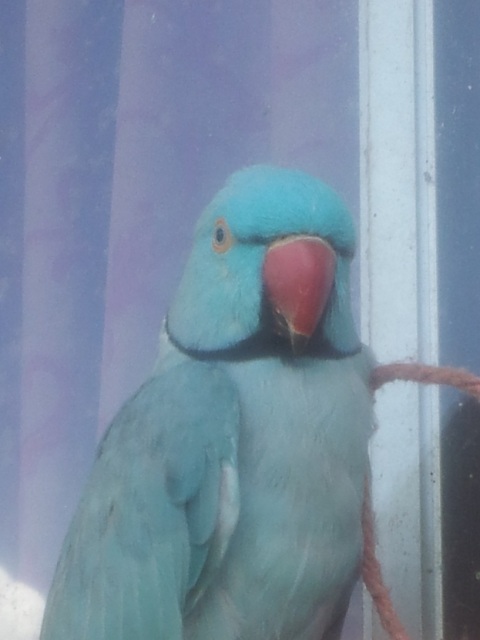 RE: Indian Ringneck probems
Question
Indy our Ringneck
Thank you for your he
RE: Indian Ringneck probems
Question
Indy our Ringneck
Thank you for your he
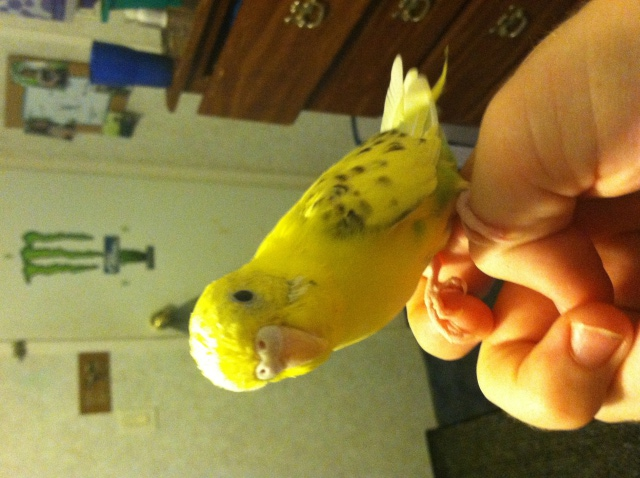 Parakeet gender
Question
Parakeet
Hi, I looked for an expert und
Parakeet gender
Question
Parakeet
Hi, I looked for an expert und
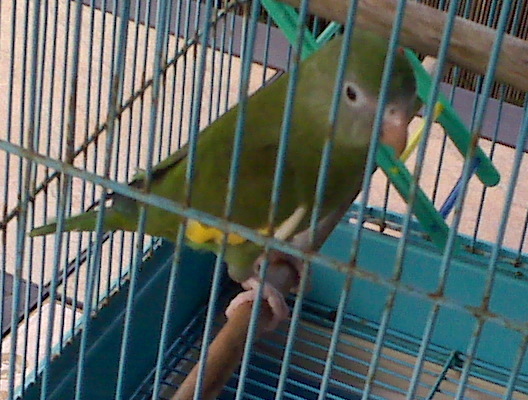 What type of parrot is this?
Question
Friendly bird
A week ago ths small parrot flew
What type of parrot is this?
Question
Friendly bird
A week ago ths small parrot flew
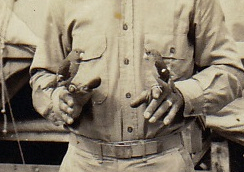 ID Birds
Question
Panama Birds
My uncle served in Panama in 1941
ID Birds
Question
Panama Birds
My uncle served in Panama in 1941
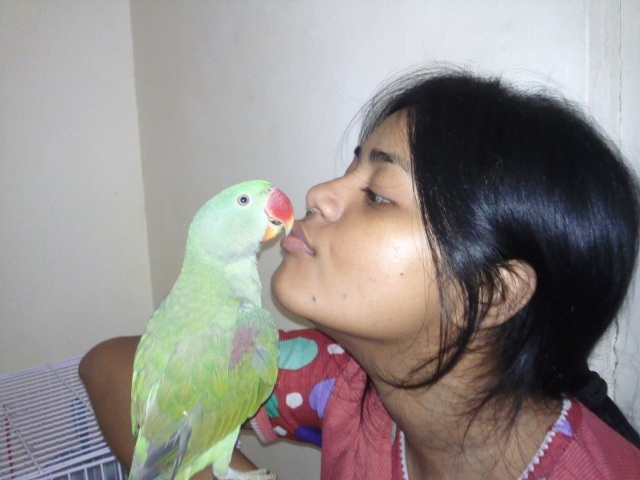 can i give my parrot chole(chana) called in hindi
Question
my little chaddi alexa
dear sir,
can give chan
can i give my parrot chole(chana) called in hindi
Question
my little chaddi alexa
dear sir,
can give chan